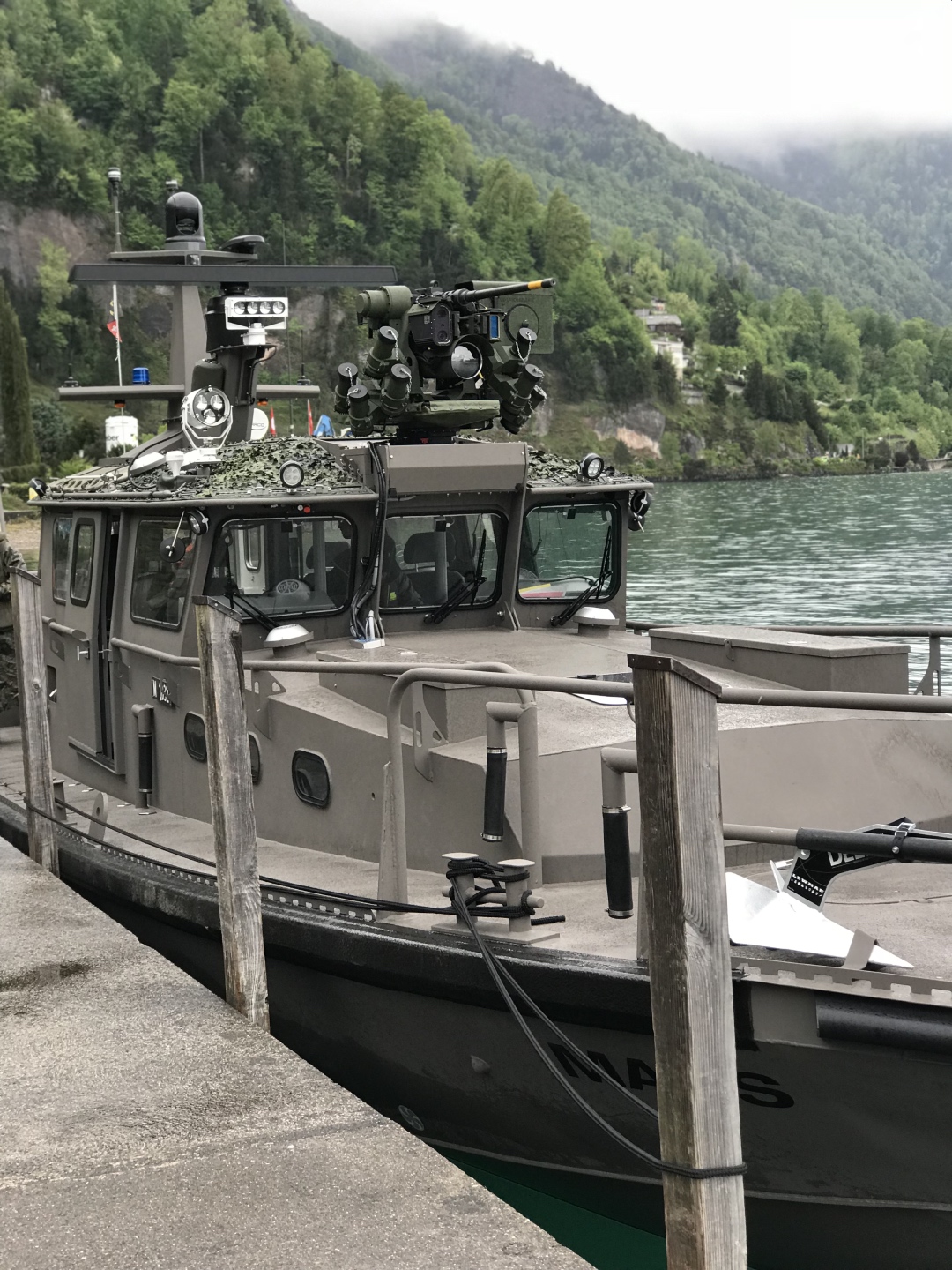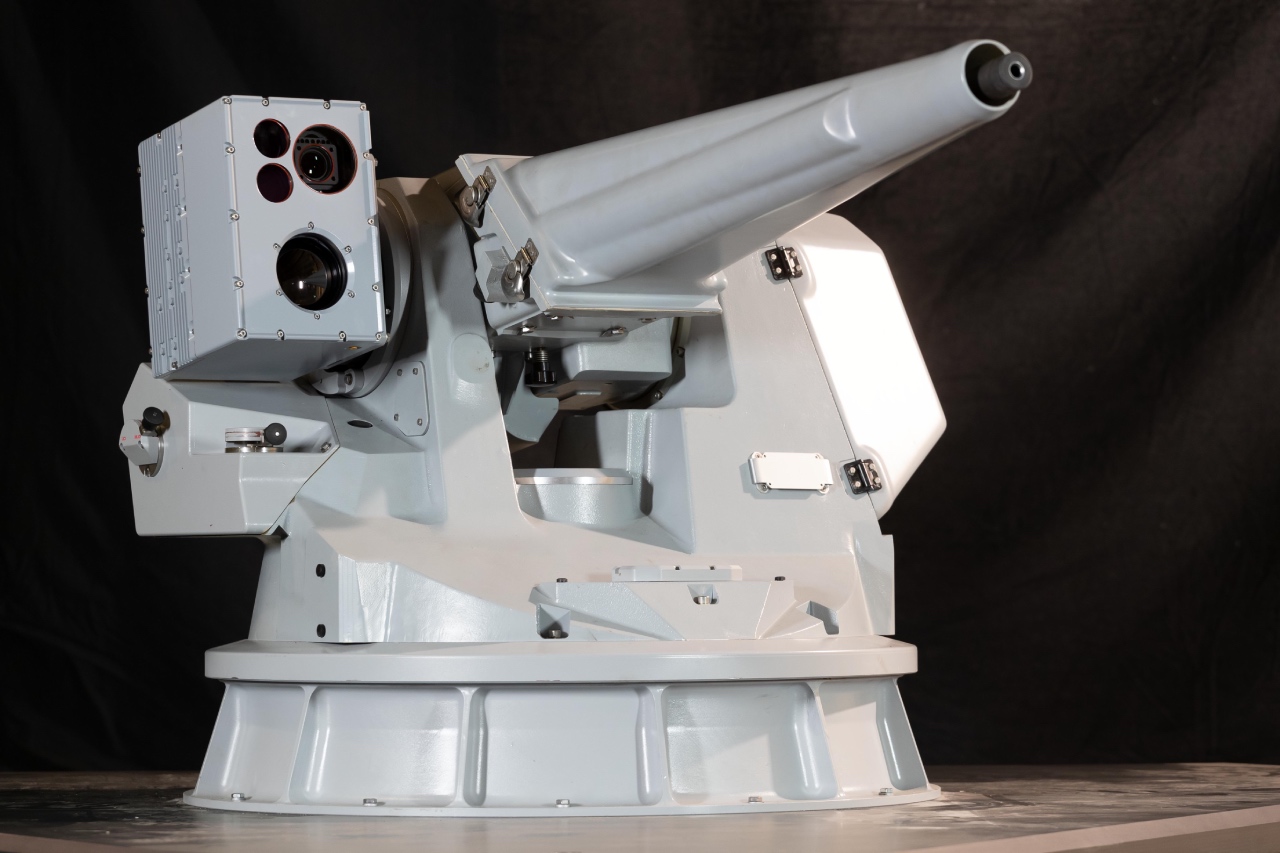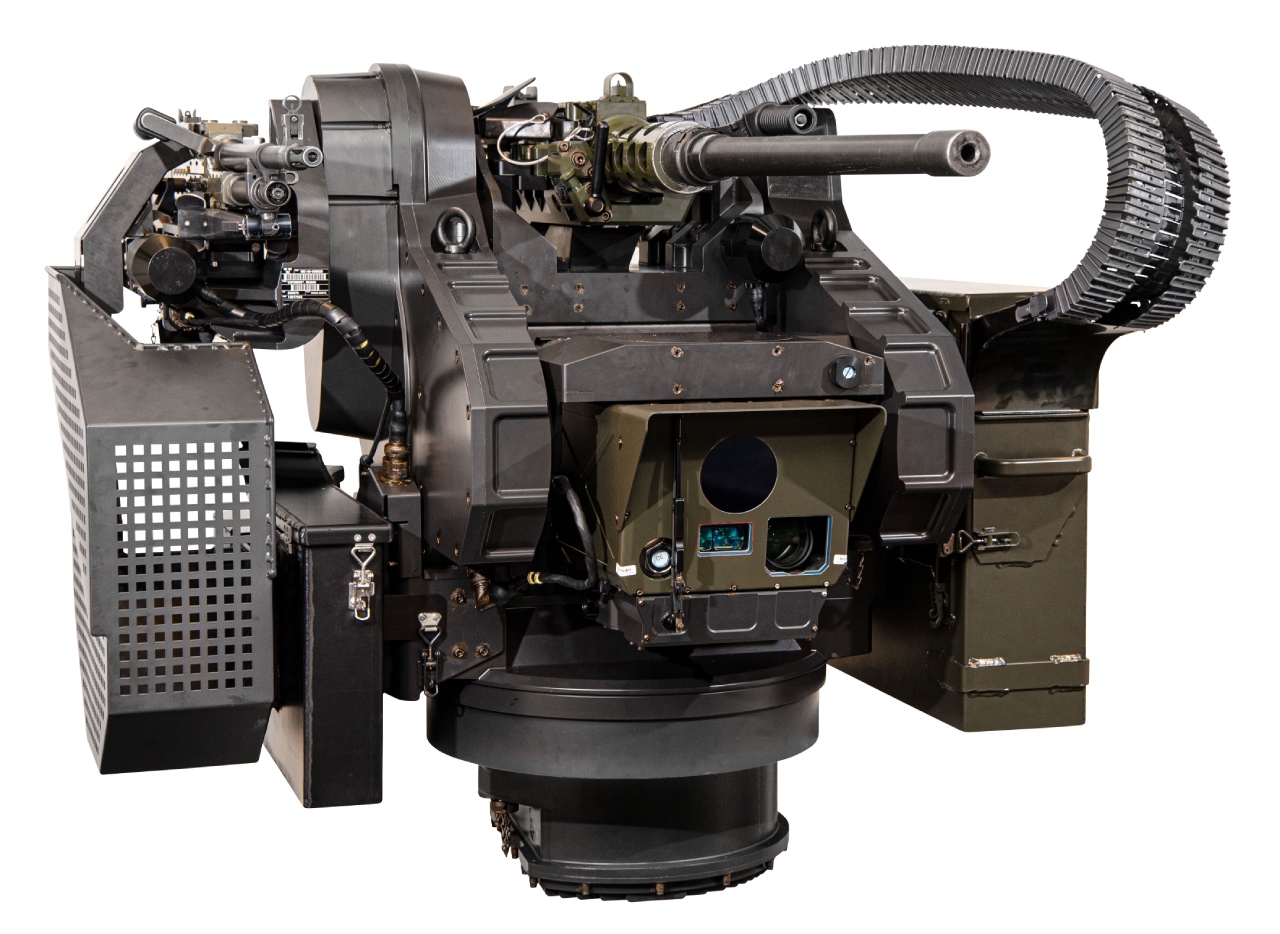
Remote weapons are increasing in calibre as the ability to link them with a greater range of sensors and systems increases.
Naval remote weapon stations (RWS) are becoming increasingly popular among navies as they seek to install them on both large and small warships to improve their firepower.
This is important for the Indo-Pacific region where the rise of China over the past decades as a major power has caused tensions with its neighbours in the surrounding seas, including the East China Sea and South China Sea.
Tensions such as in 2021 when over 200 Chinese ‘supposed’ vessels anchored at Whitsun Reef in the Philippines Exclusive Economic Zone (EEZ) over which China disputes ownership. There are thousands of other such marked and unmarked Chinese vessels operating across the wider region in support of China’s territorial ambitions.
This type of potential confrontation increases the risk of an accident that could escalate into a conflict. With such increasing levels of asymmetric and grey zone face-offs, there is a growing need for more adaptable weapon systems that can be quickly fitted to many types of patrol vessels and warships.
Any naval force needs to have the ability to enforce the protection of its own EEZ, strategic sites and conduct force protection and interdiction missions. These vessels need to be able to respond to threats such as fast attack craft, new unmanned surface vessels (USVs) and other surface ships as well as airborne threats including helicopters and unmanned aerial systems (UAS).
RWS can offer significant capability improvements over existing manned weapon stations. Operating remotely means they can be used more effectively when used in conjunction with supplemental situational awareness and targeting information.
They can also reduce a ship’s manpower requirement and improve crew safety. The difference between RWS and crew-served weapons is that the RWS can be operated by a single person from a controlling station. This is instead of having 2-3 crew on deck for observing/commanding, firing and re-loading exposed to the harsh seagoing environment.
Removing those additional crew members from gunnery duties allows them to be assigned other tasks or the ship can reduce its overall headcount. This makes overall ship operations more efficient and with fewer crew the vessel becomes cheaper to operate. This is important for small ships with fewer crew or for small naval forces operating on a limited budget.
Arne Gjennestad, vice president Marketing & Sales for Land Systems at Kongsberg Defence & Aerospace, a Norwegian defence company, told AMR: “It is about saving manpower and of course the personnel using these systems in a centralised area or protected area free from the environment instead of standing outside on the deck in the sea spray on three different sides of the ship.”

He said that that a single operator could also control more than one RWS from a multi-function console therefore multiplying efficiencies and reducing operating budgets even further. “One operator can simultaneously control several stations, but those several stations can also be arbitrated and if necessary controlled by separate operators if you have the necessary control systems available.”
The RWS controller can also be situated anywhere in the ship behind a protected position to avoid being exposed to the extremely cold, wet and windy marine environment and any counter-fire. This could be in the operations room alongside other ship’s sensor and weapons system’s operators or in the bridge where the controller can communicate directly with the ship’s commander.
“You can get benefits from having a multirole weapon station being able to feed sensor data or sensor information directly into the command centre, bridge or direct to the Commanding Officer. Otherwise, you have three guys standing with 12.7mm manned guns arming the ship and they have to use vocal communications into the bridge to the officer in charge,” Gjennestad explained. “But with a multi-role console we can also see the sensor data from the long-range camera and laser range finder so it gives the person in the command centre a richer level of situational awareness.”

In this way RWS on naval vessels offer similar capability advantages as their vehicle-mounted land RWS equivalents. In fact, large numbers of naval RWS have been developed from earlier land RWS and enhanced for naval operations to improve reliability and accuracy in a marine environment.
Olivier Lequeux, Medium Calibre marketing director at Nexter, a French defence company, explained: “Today, we observe a growing demand for light and fast patrol vessels to carry out mixed operations (military, police, fight against piracy and illegal fishing). At the same time, we are witnessing the gradual renewal of the fleets of large vessels, which are increasingly computerised and have smaller crews. Moreover, the targets are also changing and multiplying: from now on, navies must face drones and new generation missiles.”
“Thus, for both small and large ships, navies around the world are opting to upgrade their weapons systems and to operate them remotely. The increase in calibre is reflected in the gradual abandonment of manual mounts equipped with 7.62mm weapons and from 12.7mm to 40mm, including 20mm.”
Weapons fitted to RWS have traditionally fired light calibres such as 5.56mm or 7.62mm, so the move to increase towards more medium calibres from 12.7mm (.50 cal) up to 40mm is significant in terms of the relative power of both small and large warships to become more effective at engaging targets and using RWS for additional roles.
Mikael Hansson, Combat Systems senior director sales at Saab, a Swedish defence company told AMR: “The capabilities of modern RWS maybe has the biggest advantage for small vessels where a RWS could be the only weapon system onboard and where the environment is more hostile/difficult than on a large vessel. A modern RWS on a small vessel will enable effective warfare on-the-move and also offer air target capabilities, of course depending on weapon choice.”
Larger calibres
Hansson said that more customers are investigating larger calibres: “This is due to requirement to deliver more effect on the target and at longer ranges. This means that the RWS market is closing the gap with turrets/unmanned turrets. RWS manufacturers today look for larger calibre effector systems that deliver effect at a relatively low recoil impact.”
Unlike smaller ships, larger naval vessels or major combatants will also operate larger main gun systems or are equipped with missiles and the associated sensor payloads to support in addition to RWS.
“Large vessels can use the RWS in situations when larger weapons are over-kill or when specific small targets needs to be engaged,” Hansson said. A RWS can hit targets to within 50 metres of a ship, which larger main guns and long-range medium-calibre weapons are unable to engage. “A RWS can also be integrated with the larger vessels’ Fire Control System to be utilised for navigation, search and rescue or as a redundant fire control director for the vessel’s larger armament. A large vessel is of course also better adapted to larger calibre RWS due to structural robustness and ammunition capacity,” Hansson added.
A spokesperson from Israeli company Elbit Systems told AMR that RWS with small calibres of up to 12.7mm “are usually installed onboard small to medium vessels, between 45 tons to 300 tons such as fast patrol boats, missile ships and small corvettes.”
Small and medium naval platforms are usually used for coastal control and force protection providing a larger perimeter protection against multiple small and fast manoeuvring targets that could be attacking in a swarm in the air or on the surface.
The spokesperson added: “Naval RWS with higher calibres of 20-30 mm are installed on larger naval platforms of 300-4,000 tons as primary or secondary weapon system (depending on the main missions and purpose of the vessel).”
These larger ships will employ RWS for force protection, particularly in the littorals and when entering and leaving ports, surface warfare, short-range air defence and as an a close-in-weapon system (CIWS).
Because RWS can be fitted to almost any warship for primary or secondary roles, these systems need to have an increasing array of capabilities. Enhanced ranges and more lethality to engage and destroy targets at range, as well as hit a wider variety of targets such as unmanned aerial systems (UAS), loitering munitions and even missiles are all desirable.
Saab’s Hansson said that to be efficient at detecting, recognising, identifying and engaging UAS “the RWS system will have to be part of a system.” He explained: “That means that a surveillance sensor is needed, that there is a secure and real time communication available, that video techniques can be used for identification and that effector technology is further enhanced. This could be one of the most interesting tasks for future RWS Systems.”
Larger calibre munitions up to 40mm will offer extended range and a bigger kinetic effect, but to engage aerial targets naval RWS will have to fire air-burst ammunition of about 30mm in calibre and be integrated with an air search radar.
Gjennestad noted that larger calibres bring additional benefits. “With a 40mm or 30x113mm calibre you get another type of ammunition compared to a 12.7mm – you get more high explosive in the water. We are seeing an interest in that,” he said. “There are also requests for something in between 12.7mm and 30mm, such as 20mm and the short 30mm,” he added.
Naval RWS could even be integrated with anti-tank guided munitions for enhanced long-range lethality. Therefore the main trend is towards up-gunning the weapons fitted to naval RWS to offer a more powerful and effective capability than hitherto has been the case.
A spokesperson from FN Herstal, a Belgian defence company also told AMR that a major trend is to install RWS on USVs. “This drone can patrol in internal and territorial waters. Integrated with a CMS, this allows end-users to cover large areas like archipelagos. Harbour protection and anti-piracy missions are also of interest. And during expeditionary mission, launched from corvettes, the USV can address attacks from small surface combatants,” the spokesperson explained.
When fitted to USVs the RWS can be used to attack approaching threats or to protect critical infrastructure at sea such as oil rigs, or perform the CIWS defence role for larger ships. RWS fitted to USVs will require more enhanced artificial intelligence (AI) and image processing to be able to function effectively as a manned craft.
The Republic of Singapore Navy (RSN) is in the early stages of introducing new maritime security (Marsec) USVs into service that will eventually be equipped with a 12.7mm MG and laser dazzler installed on a RWS from ST Engineering.
The Philippines Navy (PN) has initiated a programme to develop its own RWS for the M2 .50cal machine gun under Project BUHAWI (Building a Universal Mount for Heavy-Barrel Automated Weapon Integration). A Philippines DND announcement stated that the project it designed to improve the self-reliance of the Philippines armed forces for its equipment needs. The PN uses manned 12.7mm guns on its craft and the mini-Typhoon RWS from Israeli defence company Rafael.
Meanwhile the latest entrant into the naval RWS market is the Lionfish family of systems from Italian defence company Leonardo, that was launched in 2020. It has been designed specifically to counter fast boats, fast inshore attack craft, helicopters and UAS. Lionfish is available with a 12.7mmx99mm calibre in three models: an Ultralight weight variant of 400lb (180kg), a below-deck Inner Reloading variant of 480lb (218kg) and a 660lb (300kg) Top variant with a larger 400 round magazine and improved electro-optical director and a cover for additional weather protection and improved stealth characteristics. The Inner Reloading model secured a launch customer in 2021.
A new 20mmx128mm calibre variant of Lionfish is under development and the company plans to complete its qualification and validation phase in 2022. It is similar to the Top model 12.7mm variant with the same EO director and cooled IR sensor, but weighing 992lb (450kg) with a magazine of 250 rounds, a rate of fire of 1,000 rounds per minute and a range of one nautical mile (2km) using an Oerlikon 20mm KAE gun. Lionfish joins Leonardo’s Marlin family of RWS that fires larger calibre weapons in the 30-40mm range.

In 2020, the French DGA procurement authority contracted Nexter to upgrade the 20B 20mm Narwhal naval RWS on all French Navy warships. This highlights the level of importance that naval RWS have as part of a ship’s defensive capability. The company has been installing the new ‘V1’ upgrade that includes a wider variety of shot selections and improved man-machine interface. Deliveries of the modernised Narwhals across the fleet are due to be completed later in 2022. A new V2 variant is expected to follow and a completely new system is due to begin development shortly in partnership with Naval Group.

Kongsberg’s Protector RS4 Naval RWS is based on its land-based Protector RWS family that the company states are the most fielded in the world with 20,000 units sold and in use. Gjennestad said that in late-2021 the company secured sales of the RS4 Naval to two different countries.
In 2020, FN Herstal’s 12.7mm Sea deFNder naval RWS using the M2HB-QCB gun was selected by French shipbuilder Naval Group as the weapon system for the 12 new Mine Countermeasure Vessels (MCMV) it is building for the Royal Netherlands Navy and Belgian Navy. Six vessels will be delivered to each navy from 2024. This shows that a wide range of vessels are being fitted with these modern gun systems to increase firepower that in the past would not otherwise have been equipped with.

In 2018 the Royal Swedish Navy ordered the Trackfire RWS for its new Combat Boat 90 (Strb90 HSM) amphibious vessels. Trackfire has been fitted with 7.62mm, 12.7mm and 40mm guns as well as a variety of non-lethal effectors. Sweden wants to up-gun its fast watercraft to provide additional firepower for its defensive forces across its Baltic coastline and waterways.

Nexter’s Lequeux said that the overall RWS offer on the naval market is being modernised: “These systems must be capable of firing in difficult sea conditions; they must have a target tracking mode; their maintenance must be as low as possible to avoid exposing the crew; they may or may not be integrated into the ship’s CMS.”
Hansson told AMR: “The RWS market is expanding as it is delivering precise calibre weapons effects with better protection for the operators and improved hit performance compared to manually operated mounts.”
He concluded: “The improved performance is available due to development of lower cost / higher performance sensors (electro-optical, gyro, encoders etc) and also software functions that were earlier only available for much more complex systems. These trends will continue in the future as technology develops.”
by Tim Fish










